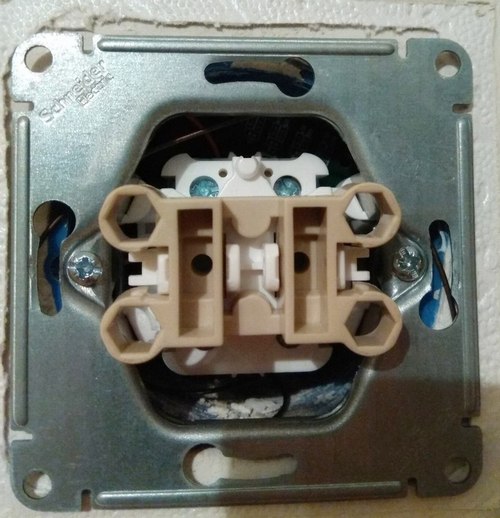💬 Wall Switch Insertable Node
-
Which kind of switches can we plug? normally losed or any kind of light switches already installed in the house?
-
Which kind of switches can we plug? normally losed or any kind of light switches already installed in the house?
@jeremushka We can use any switches\buttons with this board. So you can use both ON/OFF and momentary switches.
-
@jeremushka We can use any switches\buttons with this board. So you can use both ON/OFF and momentary switches.
@Koresh interesting. What about the battery life? how did you optimize your code in order to have at least battery life 1 year ?
-
@Koresh interesting. What about the battery life? how did you optimize your code in order to have at least battery life 1 year ?
@jeremushka
There are no problems with battery drain in this circuit. The MCU sleeps between buttons action. Any changes of button state cause rising edge on the interrupt pin and intterruption routine calling (both of open and close events). We check buttons state only during interuption routine. If you use ON-OFF buttons each of buttons in closed state will increase current consumption by ~3uA. Which is not very critical ;) -
@jeremushka
There are no problems with battery drain in this circuit. The MCU sleeps between buttons action. Any changes of button state cause rising edge on the interrupt pin and intterruption routine calling (both of open and close events). We check buttons state only during interuption routine. If you use ON-OFF buttons each of buttons in closed state will increase current consumption by ~3uA. Which is not very critical ;)@Koresh indeed 3uA is nothing. However, the light can always be on or off if the circuit has some problems. Because no action on light switch will be possible.
-
@Koresh indeed 3uA is nothing. However, the light can always be on or off if the circuit has some problems. Because no action on light switch will be possible.
@jeremushka said in 💬 Wall Switch Insertable Node:
" if the circuit has some problems"Could please elaborate more on your findings? Did you notice any bugs in the code or in schematics?
-
Hi Sefi,
if you like to put some additional extra switch somewhere you can use this funny way:
https://www.youtube.com/watch?v=-vJRF8ByBZU&feature=youtu.be
if you like to use the one in the wall, this way may work for you:
In both ways you need to have something that receives signal from the switch - a relay node.
3 easy steps as usual ))))
1. Сonnect any connector (J1-J4) to a switch terminals and glue them together with self adhesive or Velcro or glue gun....


2. Connect wires from the wall together. Now you power up the Relay node which controls a bulb in the ceiling.

3. Install the switch and the switch node back into the wall.

let me know if it is clear for you. I mean the Relay node part.
safety first - power down the switch before removing it.
-
Hey @yury , thanks for the reply!
The pictures were very helpful :)Does this board come flashed with the alternate bootloader that supports OTA updates?
-
Hey @yury , thanks for the reply!
The pictures were very helpful :)Does this board come flashed with the alternate bootloader that supports OTA updates?
@Sefi-Ninio said in 💬 Wall Switch Insertable Node:
Hey @yury , thanks for the reply!
The pictures were very helpful :)Does this board come flashed with the alternate bootloader that supports OTA updates?
yes, comes with dualoptiboot. but the code is very basic and sends to sleep right after button pressed. So need some additional code to keep it awake to wait for OTA to receive.
-
Would it be possible to skip the 74HC86D and use a pin change interrupt instead? And still support on/off switches?
-
Would it be possible to skip the 74HC86D and use a pin change interrupt instead? And still support on/off switches?
-
Would it be possible to skip the 74HC86D and use a pin change interrupt instead? And still support on/off switches?
